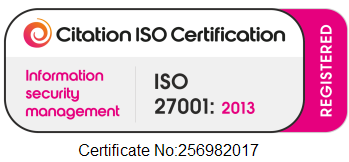Everything You Need To Know About Candidate Matching
As recruitment processes become increasingly digital, more and more recruiters are turning to candidate matching technology to help them streamline their hiring process. In fact, according to recent research, 32% of recruiters use candidate matching software – and it’s only going to become more important in 2023.
But what exactly is candidate matching technology, and how can it help you find the right candidates for your open positions? In this blog, we’ll take a deep dive into everything you need to know about candidate matching.
Benefits of Candidate Matching Technology
One of the biggest advantages of using candidate matching technology is that it can automate the screening of CVs and shortlisting of applicants. This can be extremely valuable for companies that have a lot of open positions and get a lot of resumes on a regular basis.
For example, one of the UK’s largest online fashion retailer receives over 85,000 applications every month, and screening through these applications manually was proving to be a time-consuming process. To improve their hiring efficiency, they turned to candidate matching technology.
The results were impressive: They were able to reduce their time-to-hire by 50%, and their cost-per-hire by 22%. In addition, the company saw a 13% increase in the diversity of their hires, which they attributed to the removal of any potential for human bias in the screening process.
In addition to streamlining the hiring process, this technology can also remove the potential for hiring bias. Since the software uses algorithms to analyse CVs and determine which candidates are the best fit for a position, it can help eliminate subjective judgments and ensure that all candidates are evaluated fairly.
How Candidate Matching Technology Works
So how does candidate matching technology actually work? At its core, candidate matching technology leverages AI and machine learning to automate the screening process. This can involve a variety of different features, such as:
- Keyword matching: The software can scan CVs for specific keywords and phrases that match the job description, and rank candidates based on how many keywords they include.
- Skills matching: The software can also analyse the skills and experience listed on a candidate’s CV and compare them to the requirements of the job.
- Cultural fit assessments: Some software may also evaluate candidates’ values, personality traits, and work styles to determine whether they would be a good fit for the company culture.
Limitations and Concerns
While candidate matching technology can offer many benefits, it can also have limitations. Some potential limitations:
- Lack of transparency: It can be difficult to understand how the system arrives at its recommendations. This lack of transparency makes it challenging to identify and correct potential incorrect matches.
- Legal implications: There is also a risk that the software could be used in ways that use inaccurate data to make hiring decisions.
How to Implement Candidate Matching Technology
You can implement candidate matching software by first evaluating your hiring needs and selecting a tool that aligns with your objectives. Some factors to consider when choosing a candidate matching software include:
- the size of your company
- the number of job openings
- the expected volume of applications.
Once the software has been selected, you should ensure that your job postings are optimised with relevant keywords to improve the accuracy of the matching process.
It’s also important to train your recruiters on how to use the software effectively and ensure that they understand how the matching algorithm works. You should regularly review the results of the software to assess its accuracy and refine your hiring strategies based on the data. Finally, it’s important to provide clear communication and transparency about using such technology, promptly responding to candidates and offering feedback on their applications.
Share this post and follow us on social media!
Like our blogs? Sign up for our newsletter




Comments are closed